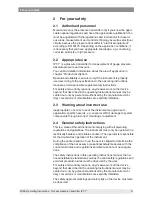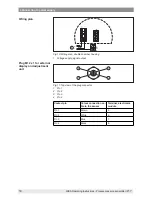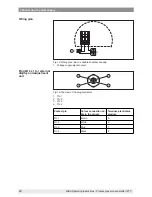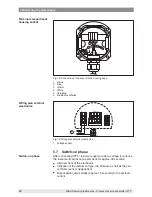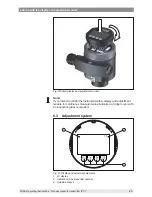
13
5 Connecting to power supply
WIKA Operating Instructions - Process pressure transmitter IPT-1*
5 Connecting to power supply
5.1 Preparing the connection
Always keep in mind the following safety instructions:
•
Connect only in the complete absence of line voltage
•
If overvoltage surges are expected, overvoltage arresters should
be installed
In hazardous areas you must take note of the respective regulations,
conformity and type approval certificates of the sensors and power
supply units.
Power supply and current signal are transmitted via the same two-
wire connection cable. The supply voltage range can differ depending
on the instrument version. The exact range is stated in the "
Technical
data
" in the "
Supplement
".
Provide a reliable separation between the supply circuit and the
mains circuits according to DIN EN 61140 VDE 0140-1.
Keep in mind the following additional influences on the operating
voltage:
•
Output voltage of the power supply unit can be lower under nomi-
nal load (with a sensor current of 20.5 mA or 22 mA in case of fault
message)
•
Influence of additional instruments in the circuit (see load values in
chapter "
Technical data
")
The instrument is connected with standard two-wire cable without
screen. If electromagnetic interference is expected which is above the
test values of EN 61326 for industrial areas, screened cable should
be used.
Use cable with round cross-section. A cable outer diameter of
5 … 9 mm (0.2 … 0.35 in) ensures the seal effect of the cable gland.
If you are using cable with a different diameter or cross-section,
exchange the seal or use a suitable cable gland.
If screened cable is required, connect the cable screen on both ends
to ground potential. In the sensor, the screen must be connected
directly to the internal ground terminal. The ground terminal on the
outside of the housing must be connected to the potential equalisa-
tion (low impedance).
If potential equalisation currents are expected, the connection on the
processing side must be made via a ceramic capacitor (e. g. 1 nF,
1500 V). The low-frequency potential equalisation currents are thus
suppressed, but the protective effect against high frequency interfer
-
ence signals remains.
Warning:
Considerable potential differences exist inside galvanic plants as well
as vessels with cathodic corrosion protection. Very large equalisa-
tion currents can flow through the cable screen when the screen
Note safety instructions
Take note of safety
instructions for Ex
applications
Select power supply
Select connection cable
Cable screening and
grounding





